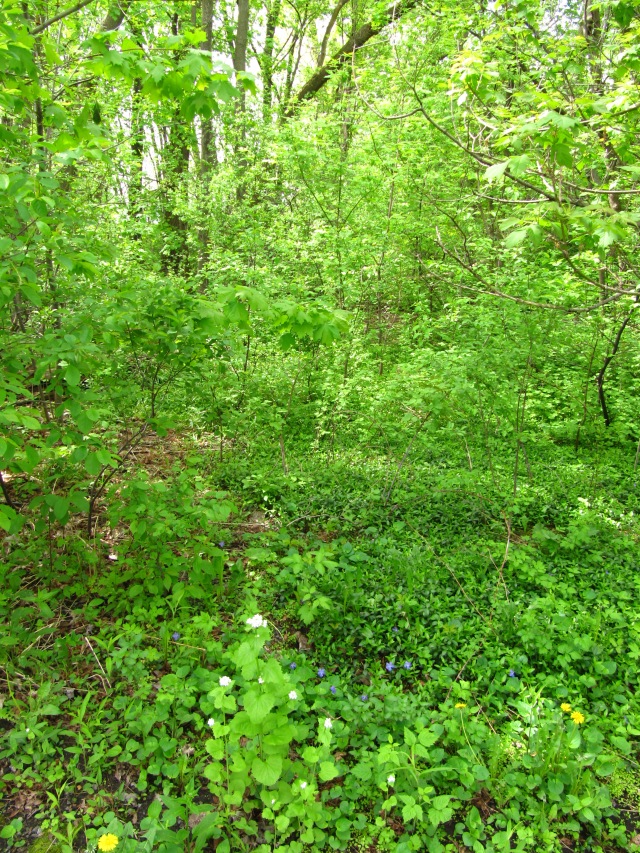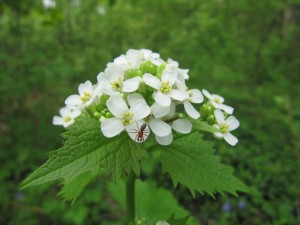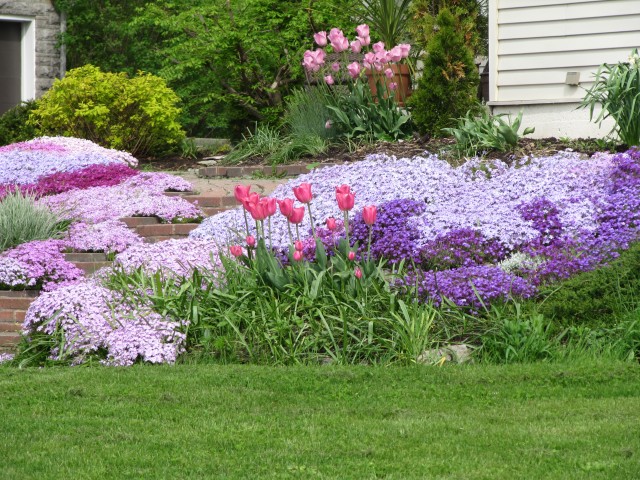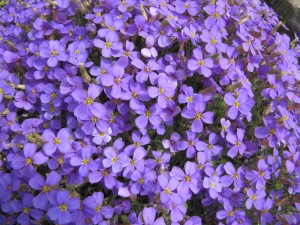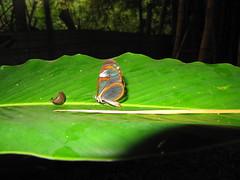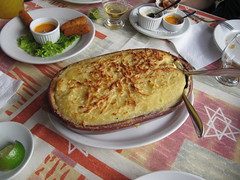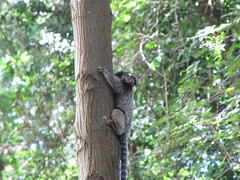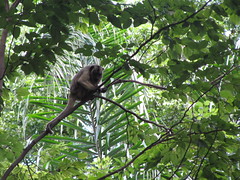The eastern Gray Squirrel (Sciurus carolinensis) is an incredibly common sight in our neighbourhood (though often black or reddish rather than grey). My main interaction with them is usually chasing them away from my bird feeder, and trying to keep them out of my compost. So usually I hardly notice them when I’m out walking around. However, the other day I was walking past this Maple tree (Acer sp.) and I noticed a black individual with a reddish tail sitting near the base chewing on something. It was initially this individual colour difference that caught my eye, but then as I was looking the squirrel suddenly dropped its food and did a complete back flip! I was a little startled so stood there and watched it for a couple of minutes to see what this crazy squirrel would do. It continued to return to its’ food, chewing on it for a little while and then either doing another flip or running in a quick circle, sometimes part way up the tree. However it always returned to its’ food. Finally after about 5 minutes and 7-8 crazy flips and runs it dropped its food and headed up the tree. Going over to investigate what it had been it turned out that it had been chewing on a large piece of bark. I was really starting to question this squirrel’s sanity.
But then, on closer inspection of the bark chunk, I noticed the abdomens of several ants sticking out of a crack in the bark. It turned out that the Maple was host to a large colony of Black Carpenter ants (Camponotus pennsylvanicus). The squirrel had been breaking away bark to expose the nest further up the trunk and then eating the ants and larvae in the broken away pieces on the ground. The reason it would occasionally freak-out was from being bitten by adult ants protecting the nest!
Now that I was looking at the tree trunk I noticed a few other interesting insects around. First off there was a darkling beetle (family Tenebrionidae: Neatus tenebrioides) making its way up the trunk. Beetles in this group are often fungus feeders, typically feeding under the bark on fungal hyphae in the rotten wood.
There was certainly lots of fungus available in the tree. There was one species of Polyporales that was fruiting on the base of the tree.
The fruit body was encrusting the roots of the tree all around the base of the tree. It was also attracting a swarm of dark-winged Fungus gnats (Sciaridae). These small flies spend the majority of there lives as larvae, feeding on various forms of fungi. These were probably feeding on the fungal hyphae of this polypore. This group of flies is also the same group of flies that frequently infest house plants, where they do essentially the same thing, feeding on the fungi associated with the roots of the plant. A good example of how nature can be near us even in our homes!





